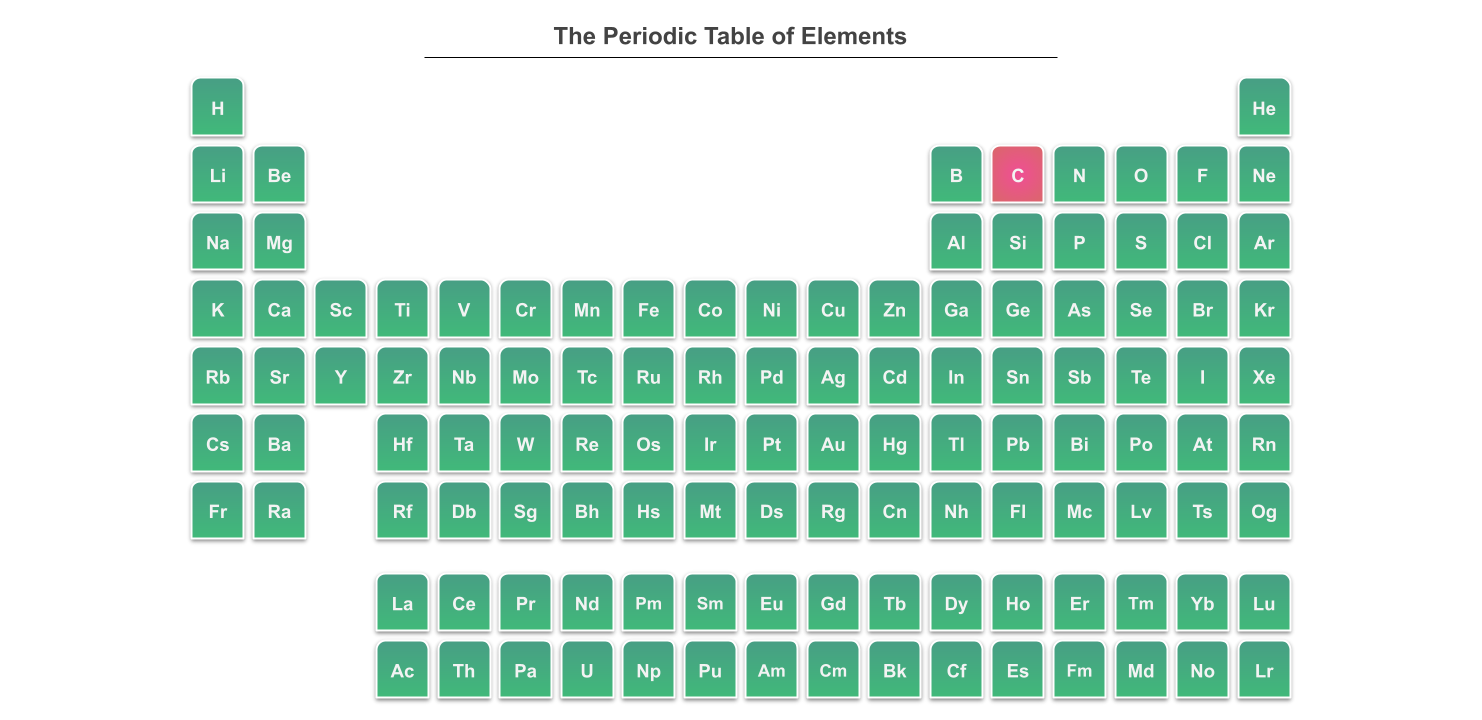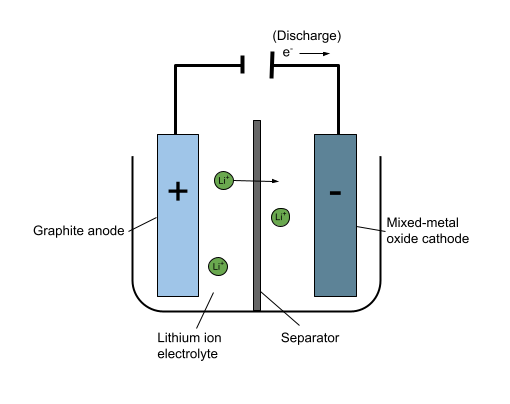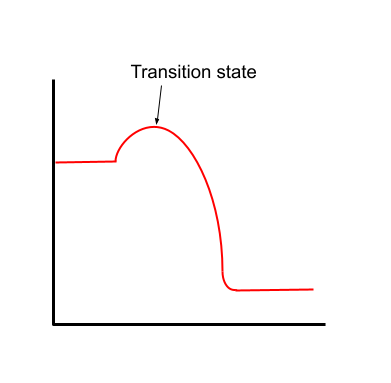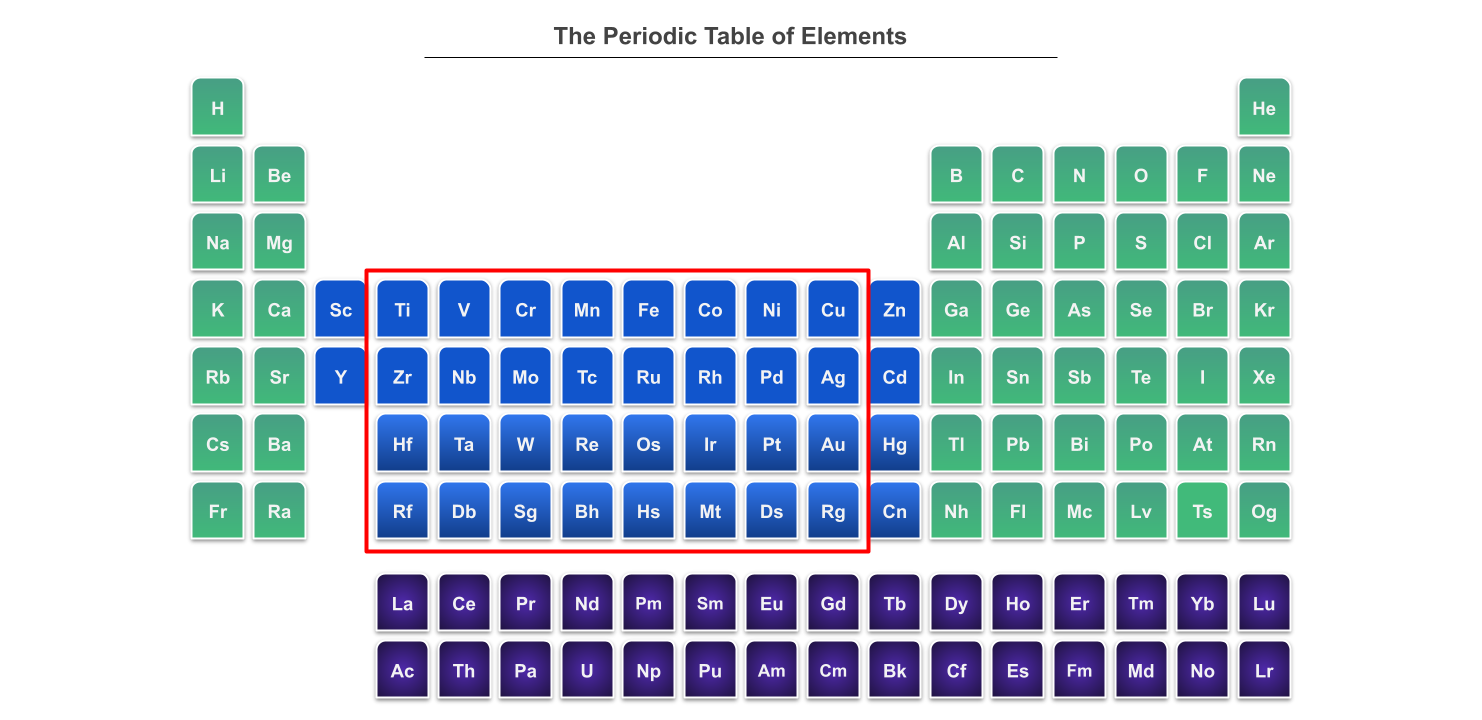
StudySmarter: Study help & AI tools
4.5 • +22k Ratings
More than 22 Million Downloads
Free



Lerne mit deinen Freunden und bleibe auf dem richtigen Kurs mit deinen persönlichen Lernstatistiken
Jetzt kostenlos anmeldenWhat do salts, car batteries, drain cleaner, and tin cans have in common? Answer: they are all examples of things you'll find in inorganic chemistry.
Inorganic chemistry is a branch of chemistry that deals with the structure, properties and reactivity of inorganic compounds.
Before we go any further, let's first define inorganic compounds.
Inorganic compounds are compounds that aren't based on carbon.
This might seem like a broad definition - it is! It encompasses all of the other elements in the world.
Take a look at the periodic table below. It shows carbon highlighted in pink. In inorganic chemistry, we look at compounds made from all of the other elements, from halogens to transition metals and everything in between.
 The periodic table. Inorganic chemistry focuses on compounds that aren't carbon-based. Here carbon is shown in pink. StudySmarter Originals
The periodic table. Inorganic chemistry focuses on compounds that aren't carbon-based. Here carbon is shown in pink. StudySmarter Originals
Inorganic chemistry doesn't ignore carbon - rather, it ignores carbon-based compounds. These are compounds that are based on CC and CH bonds. Such compounds are called organic compounds and you'll cover them in Organic Chemistry. They're so called because scientists originally believed that you could only find them in living organisms, but we now know that this isn't the case. But in inorganic chemistry, you'll find structures like graphite and diamond - both made of just carbon!
Going back to one of our examples at the beginning, the batteries in diesel and petrol cars are made up of electrodes placed in solution. The positive electrode, the anode, is coated in lead dioxide whilst the negative electrode, the cathode, is made from a grid of a lead alloy filled with sponge lead. The solution connecting the two electrodes is commonly sulfuric acid. This is known as the electrolyte. On the other hand, electric cars contain batteries with a graphite anode, a mixed-metal oxide cathode, and a lithium-ion electrolyte. You'll study all sorts of substances like these in inorganic chemistry. In fact, inorganic chemistry plays a vital role in many areas of life. For example, we use inorganic chemistry to design and develop things like catalysts, paints, batteries, surfactants, cleaners, jewellery, and drugs.
 A simplified diagram of the battery in an electric car. Anna Brewer StudySmarter Originals
A simplified diagram of the battery in an electric car. Anna Brewer StudySmarter Originals
Let's now look at some of the basic ideas you'll come across in inorganic chemistry.
The periodic table is a tabular arrangement of the chemical elements, organised by atomic number and properties.
The periodic table as we know it today is based on one created by Russian chemist Dmitri Mendeleev. He used knowledge about the properties of elements to order them in rows and columns, and even left gaps for undiscovered elements.
The periodic table:
 The periodic table split into four blocks,
The periodic table split into four blocks,
User:DePiep, CC BY-SA 3.0, via Wikimedia Commons
Ions are species formed when an atom loses or gains one or more electrons to form a charged particle.
Cations are positive ions whereas anions are negative ions.
You might have seen species such as before. You can also find . What is the difference between the two?
Well, these species have different oxidation states.
Oxidation states show the total number of electrons which have been removed from an element (a positive oxidation state) or added to an element (a negative oxidation state) to get to its present state.
Oxidation states are very useful in redox reactions, which you'll look at below. We represent them using superscript numbers or roman numerals. For example, has an oxidation state of 2+ and can also be written as . This means that it has lost two electrons compared to a neutral iron atom.
Redox is a term we use to describe oxidation-reduction reactions, which you'll come across in physical chemistry. However, they are important in inorganic chemistry too.
Redox reactions are reactions where both oxidation and reduction take place. When a species is oxidised, it loses electrons, and when a species is reduced it gains electrons.
Lots of inorganic compounds are formed in redox reactions. Take a look at the example between zinc and copper sulfate:
We can show this as a redox reaction using oxidation states:
Note the following:
You also learn about acids and bases in physical chemistry, but they are relevant here as well.
An acid is a proton donor whilst a base is a proton acceptor.
Some elements and compounds are much better acids or bases than others, and you'll learn a bit more about that in inorganic chemistry.
A transition state is a stage of a reaction where some bonds are partly broken and some bonds are partly formed. At this point, the molecules are at their maximum energy level, making transition states extremely unstable.
Imagine running a reaction in slow motion and taking a picture halfway through. If you zoom in closely, you might see that some of the original bonds in the reactants have broken but new bonds haven't quite formed, or that intermediate compounds have formed instead. This is an example of a transition state.
Not all molecules that start reacting together go on to finish the reaction. At the transition state, there is an exactly 50 percent chance of the reaction finishing. Transition state theory tells us that once a reaction has passed transition state, it will always go on to completion.
 The transition state of a reaction. Anna Brewer, StudySmarter Originals
The transition state of a reaction. Anna Brewer, StudySmarter Originals
Organic chemistry is filled with molecules like alkenes, alcohols and amines. But in inorganic chemistry, you are much more likely to find salts, oxides and metalloids:
In inorganic chemistry, you’ll study a variety of topics, ranging from periodicity and group 2 metals to halogens and ions. Let’s explore some of them below.
As we mentioned earlier, the periodic table shows periodicity: it contains patterns that repeat across every row in the table. This means that as you travel down a column in the periodic table, known as a group, you’ll find that the elements all react in a similar way. (Look at Periodicity and Trends to explore some of the trends in the periodic table, including atomic radii and ionisation energy.) Knowing these makes it a lot simpler to predict how an element will react. You’ll focus specifically on elements in period 3.
Group 2 contains the alkaline earth metals whilst group 7 (also known as group 17) contains the halogens, a family of nonmetals. In these two topics, you’ll explore their chemical and physical properties. For example:
After that, you’ll visit transition metals.
A transition metal is an element that forms ions with a partially-filled d subshell.
Most transition metals lie in the d block in the periodic table, but not all. Not all d block elements are transition metals either. For example, zinc only forms Zn2+ ions with a full 3d subshell, 3d10, and so isn’t a transition metal. You might also want to note that f block elements are considered to be transition metals. They’re often known as inner transition metals. In the periodic table below, we’ve shown the f block elements in purple and the d block elements in blue, with the transition metals within the d block circled in red:
 The periodic table, with the elements in the d and f blocks highlighted. StudySmarter Originals
The periodic table, with the elements in the d and f blocks highlighted. StudySmarter Originals
Transition metals share four common properties:
You’ll learn all about these in Transition Metals.
Finally, in this topic you’ll delve deeper into ions and acidity.
Inorganic chemistry doesn’t stop at the topics we explored above. Further examples include the group 1 metals, known as alkali metals, electrolysis, group 4, and the extraction of metals.
Make sure to find out what your exam board wants you to know for inorganic chemistry. Not all exam boards will test you on every topic - although learning more is never a bad thing!
Organic chemistry is a field that studies the structure, reactivity and properties of carbon-based molecules. In contrast, inorganic chemistry studies the structure, reactivity and properties of compounds that aren’t based on carbon.
Inorganic chemistry plays a role in many areas of life. For example, we use inorganic chemistry to design and develop things like catalysts, paints, batteries, surfactants, cleaners, jewellery and drugs.
Inorganic means not based on carbon. Whilst organic molecules are based around C-C and C-H bonds, inorganic compounds are based around all the other elements in the periodic table. Examples include salts and minerals.
Examples of inorganic compounds include salts, minerals, acids and metals. Examples of applications of inorganic chemistry include designing drugs, batteries, electronics and cleaning products.
Mechanisms do appear in inorganic chemistry but you won’t encounter them at this level of study.
What are inorganic compounds?
Non-carbon-based compounds that aren’t based on C-C and C-H bonds.
Columns in the periodic table are known as _____.
Groups
The periodic table shows periodicity. What does this mean?
It features patterns which repeat every row.
True or false: Ions are neutral particles.
False
Cations have a _____ charge.
Positive
Anions have a _____ charge.
Negative

Already have an account? Log in
Open in AppThe first learning app that truly has everything you need to ace your exams in one place


Sign up to highlight and take notes. It’s 100% free.
Save explanations to your personalised space and access them anytime, anywhere!
Sign up with Email Sign up with AppleBy signing up, you agree to the Terms and Conditions and the Privacy Policy of StudySmarter.
Already have an account? Log in